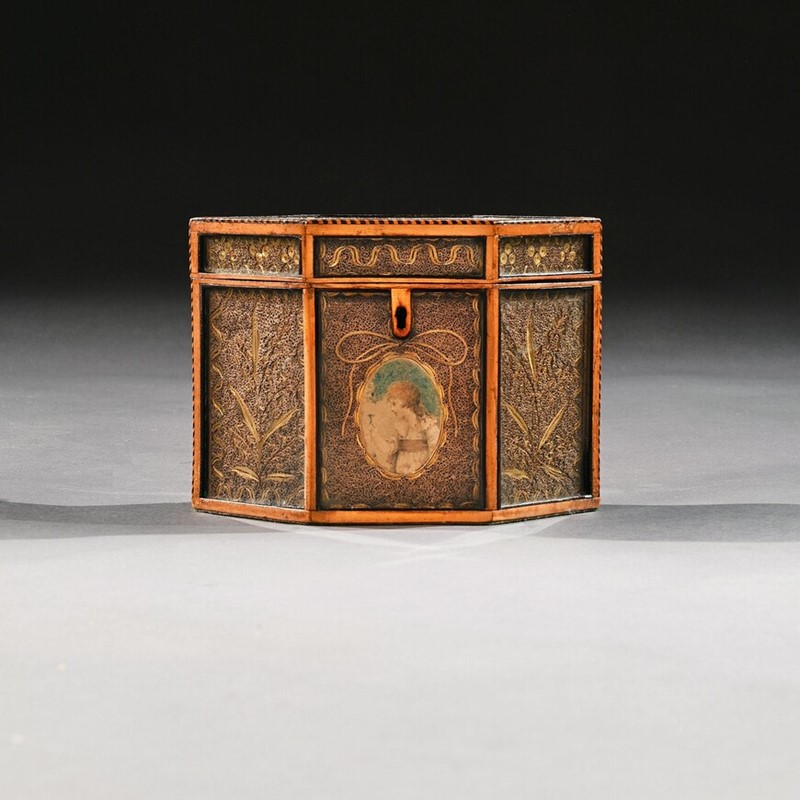Decorative Collective - www.decorativecollective.com
Sellers's Details
LOVEDAY
Tel: +44 (0)1438 869819
Email: [email protected]
https://www.decorativecollective.com/dealers/lovedayItem Details
A wonderful 18th Century George III quill work (scrollwork) tea caddy of hexagon form. English Circa 1790. Finely executed, this very attractive caddy of hexagon form of satinwood construction having glazed and decorated panels of paper scrolls and gilt rolled paper also known as quill-work. Decorated with flowers and leaves with a painted silk portrait of a young girl with a flower in hand. The surrounding panels and top decorated conformably with a ebony stringing and checkered banding to the top which opens to reveal an interior pull out shelve and velvet lined interior. Normally used as a tea caddy this looks to have been used a possibly a jewellery casket and the velvet lining looks to have been in there for a long time possibly shortly after being made.
A wonderfully decorative object that has survived in excellent condition. As mentioned below these where often made open for wealthy ladies of leisure (never practised by a ‘working-class’ women!) to infill with the art of quillwork, with this example being extremely fine.
Quilling or paper filigree is an art form that involves the use of strips of paper that are rolled, shaped, and glued together to create decorative designs. The paper is rolled, looped, curled, twisted, and otherwise manipulated to create shapes that makeup designs. In the 18th century, quilling became popular in Europe where gentle ladies of quality ("ladies of leisure") practiced the art. It was one of the few things ladies could do that was thought not too taxing for their minds or gentle dispositions.
Width 7 1/2 inches - 19cm
Height 5 inches - 13cm
Depth 4 1/2 inches - 11cm
- Period: c 1790
-
- Price: £1,850.00
- €2,106 Euro
- $2,471 US Dollar
- Location: Hertfordshire
-
- Dimensions: H: 13cm (5.12in)
- W: 19cm (7.48in)
- D: 11cm (4.33in)
